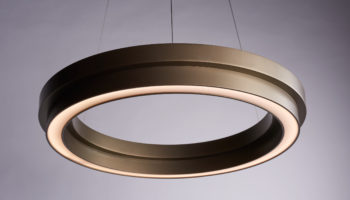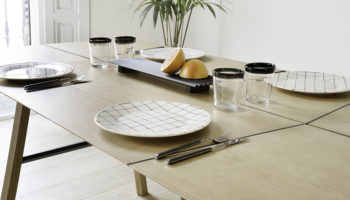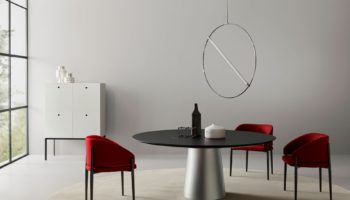Live at Design Miami: Studio Job’s Industry Table
Having finally negotiated the unseasonable warmth, excessive humidity, perpetual traffic/street construction, and enigmatic parking meters of South Miami’s renowned design district, I entered the impressively air conditioned environs of Design Miami to find myself facing Studio Job’s equally impressive Industry collection. Comprised of five “Marquetry objects” (cabinet, screen, sideboard, table and pedestal) and two gilded cast bronze pieces (centerpiece and mirror), the series has an overtly political bent:
Industry Table. Designed by Studio Job.
“modernity is present through the inlayed subjects that act as a deadly inventory of our excesses: helicopters, nuclear power plants, guns, bullets, hunting knives, submarines, tanks, depictions of surviving animals, as well as skeletons of others unable to escape…”
And that’s the edited version, if you can believe it, since the piece that most captured my interest—an oblong table with a profile reminiscent of a compressed longboard—depicts an extravagant number of doomsday icons. The piece—and the series—can hardly be accused of subtlety, and in this particular venue, where the threshold between art and design is well nigh obliterated, designers Nynke Tynagel and Job Smeets’ Industry Collection is a quintessential example of protest art. But this doesn’t mean that those with an apolitical perspective need look elsewhere for their aesthetic fix. All five of the Marquetry pieces bring new life to a traditional craft: “enhanced by the modern technology of the laser, the furnishings achieve amazingly thin and intricate patterns of white bird’s eye maple inlayed in black tulip tree veneer.”

Industry Table. Designed by Studio Job.

Industry Collection. Designed by Studio Job.

Industry Cabinet. Designed by Studio Job.

Industry Screen. Designed by Studio Job.
The black and white scheme calls attention to the theme. Design firm Mitterand + Cramer (representing Studio Job in Miami) have said that Studio Job frequently employs “iconographic, pan-historic imagery which can be in the same moment both heraldic as well as cartoon-like… the results are consistently monumental and yet somehow primitive.” The Industry Table surely bears out this sentiment. While from one perspective the imagery has a modern spin, from another the icons are quite timeless—evoking everything from the playful and macabre distortions of Tim Burton, to the morbid preoccupations of Frida Kahlo, to the wonderfully creepy fetus dioramas of 17th century Dutch anatomist and botanist (and artist) Frederick Ruysch. Like the Apocalypse itself, the Industry Collection has a timeless bent: its synthesis of artisanal craft and evocative imagery transcends historical constraints.




Leave a Reply